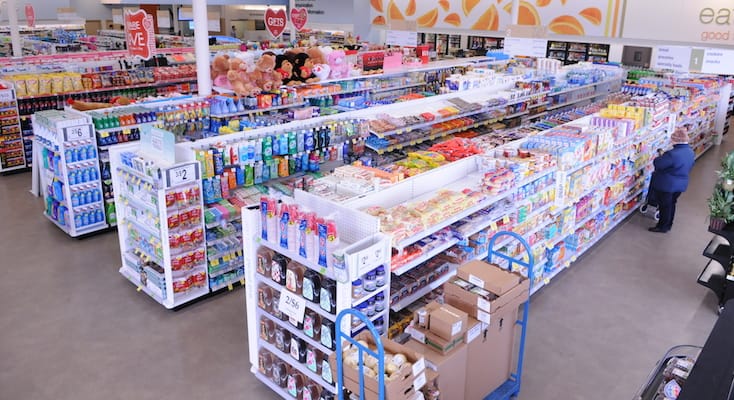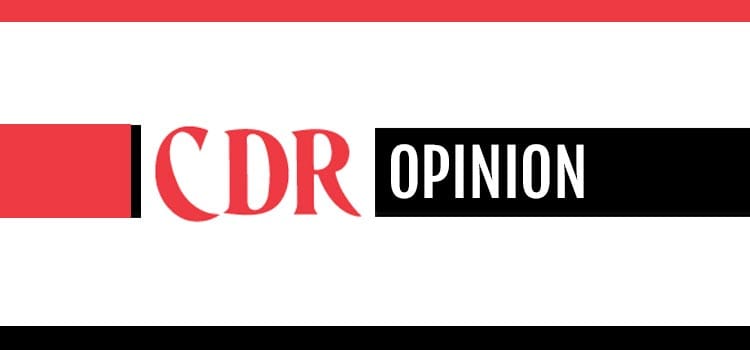Table of Contents

Much has been written about the historic sluggishness of the consumer packaged goods industry. Since 2013 CPG industry sales growth has been below 2%, and that growth has been entirely driven by pricing. In response, we see companies merging, brands being sold and jobs being lost.
The pundits in our industry sit on the sideline and pontificate on the cause of these weak sales trends. Some say distrust by Millennials of “Big Food,” but that doesn’t explain why the industry lethargy extends to nonfood as well. Others talk about lost sales to e-commerce. However, at less than 2% of industry sales, e-commerce is hardly a factor, particularly since — despite the boosters who say otherwise — growth in CPG e-commerce has been very modest.
So what is the reason for the weak sales? Certainly one macroeconomic factor at play is consumers, primarily younger ones, substituting purchases of food and apparel for electronics and other leisure activities. You think CPG is hurting? Look at the dumpster fire that is apparel.

The larger issue, though, is that the CPG industry is guilty of self-inflicted wounds. We are holding ourselves back with flawed industry paradigms and self-defeating behaviors.
The proof in this claim is that the sluggish trends are confined to only the group of companies with $1 billion or more in sales (called tier 1 companies), as their annual growth rates in the past five years have only been 0.5%, according to Nielsen.
Companies under $1 billion in sales, as a group, are doing just fine. Annual sales growth for these companies is about 4%.
Let’s take a look at 10 things that tier 1 CPG companies have done to shoot themselves in the foot:
• Packaging changes: How can you tell that a new brand manager or marketer has taken over? The package changes. I’m talking about changes in just aesthetics, no real functional enhancement. TABS Analytics has tracked the effects of dozens of these changes. Most have no effect on sales; a very high percentage of them (30% to 40%), however, hurt sales by at least 5%. The percentage of package changes that grow sales? Less than 5%.
So with package changes, we have an exercise that is time consuming, expensive and likely to hurt sales significantly, yet tier 1 companies continue with these changes unabated.
• Cynical line extensions: Want to guarantee failure in a new product? Stick it with the suffix “Essentials.” We have never tracked an Essentials line extension that grew sales; most all of them fail. In fact, it is common for tier 1 companies to launch thousands of undifferentiated, non-innovative flavor variants, not as a way to grow sales but to hold shelf space. The trade complains about this, but they are the worst enabler of the practice.
Our analysis shows that the typical new health and beauty care item sells about 70% of what the current established items produce. We have also found that fewer than 20% of new items grow brand, much less category, sales.
• Downsizing product: This is when manufacturers behave in an un-shopper-centric way and reduce the product size, yet hold the cost. They do this thinking that most shoppers aren’t doing the retail price math. And for what? The average downsize saves only 1 or 2 pennies per unit, but usually reflects a fairly big reduction in size. It usually takes fewer than 1% of consumers to notice and stop buying to neutralize the minimal profit-and-loss benefit of the cost savings.
Our analysis shows that the loss is usually much more: in the 2%-to-10% range of unit sales reduction due to downsizing.
• “Trading up the consumer”: Under the “ignorant consumer” theory of marketing, we also have the flawed paradigm of trading up the consumer. This is the practice of offering larger sizes with a better price per ounce. This strategy actually works if a smaller-size, lower-price option is still available. Usually, though, retailers and manufacturers make a full swap of lower-priced for higher-priced products. The outcome: a significant flight of customers to value channels, and lower sales overall.
• Obsession with Millennials. In some categories, such as cosmetics, Millennials drive the category and the trends. In the vast majority of categories, particularly in food, sales are driven by households with children, usually including women ages 35 to 54. Millennials are less than 15% of the sales potential for most tier 1 brands, but often garner a much larger share of the marketing investment. This is a misallocation of resources.
• Overemphasis on e-commerce: Similar to the obsession with Millennials is the over-enthusiasm for e-commerce. For a food category, fewer than 2% of transactions are done online, and shopper loyalty to the outlet is poor at 12%, versus the brick-and-mortar norm of 70%, according to the TABS 2015 Consumables study. E-commerce’s share of HBC is a bit more, in the 2%-to-5% range, but it is still a market that often receives much more focus than it is worth.
Retailers are particularly guilty of this over-allocation of effort to e-commerce, and they are similarly guilty of another misstep, which is …
• Ignoring value grocery: This is primarily relevant to food, but food is still about 70% of the CPG industry. Value grocery, primarily Aldi, makes up 6% of industry transactions, five times more than the online share. Despite that, you almost never hear retailers or manufacturers talking about this growing channel. Aldi and Lidl inflicted some major pain on U.K. grocery, and value grocery is now over 13% of the Canadian market. U.S. manufacturers of brands ignore this channel at their peril, since value grocery is about 80% private label.
• Promotional frequency over depth: A common lament heard at CEO earnings calls is that companies’ trade spending keeps going up and the impact keeps going down. This condition has been corroborated by both Nielsen and our own internal analysis. One of the big reasons is that manufacturers and retailers are pulling back on deep discounts and are opting for watered-down promotions at a much higher frequency. In reality, promotional depth always generates more incremental sales than higher frequency for tier 1 brands.
• Loyalty cards and digital coupon programs: Another failed promotional trend is the massive expansion of low-impact loyalty card and digital coupon programs at the expense of old-school vehicles such as circulars and Sunday coupons. These old-school vehicles are still more popular to consumers and impactful to sales, as the discounts are available to everyone. Further, they are much less expensive.
• Bureaucracy: You would still think that tier 1 vendors would have a strategic imperative to shake things up and do things differently. Nope. Big companies continue to be bogged down with slow decision making and a lack of flexibility. For example, a smaller company can evaluate and implement a new trade promotional management system in less than three months; the big company will take 18 months just to decide on spending 10 times more for a system that will take another 18 months to implement.
This list is certainly not exhaustive, but it covers many of the big areas where large CPG manufacturers are their own worst enemy. It is possible that a major shift of consumer preferences will return the industry to growth and the tier 1 manufacturer can avoid the need to make any structural changes to its business.
More likely, though, mergers such as Kraft Heinz will become more common and midtier managers will find themselves out of work, and wondering what happened. What will have happened is that these managers failed to act and to change the practices that were holding their business back.
Kurt Jetta, Ph.D., is the founder and CEO of TABS Analytics.









